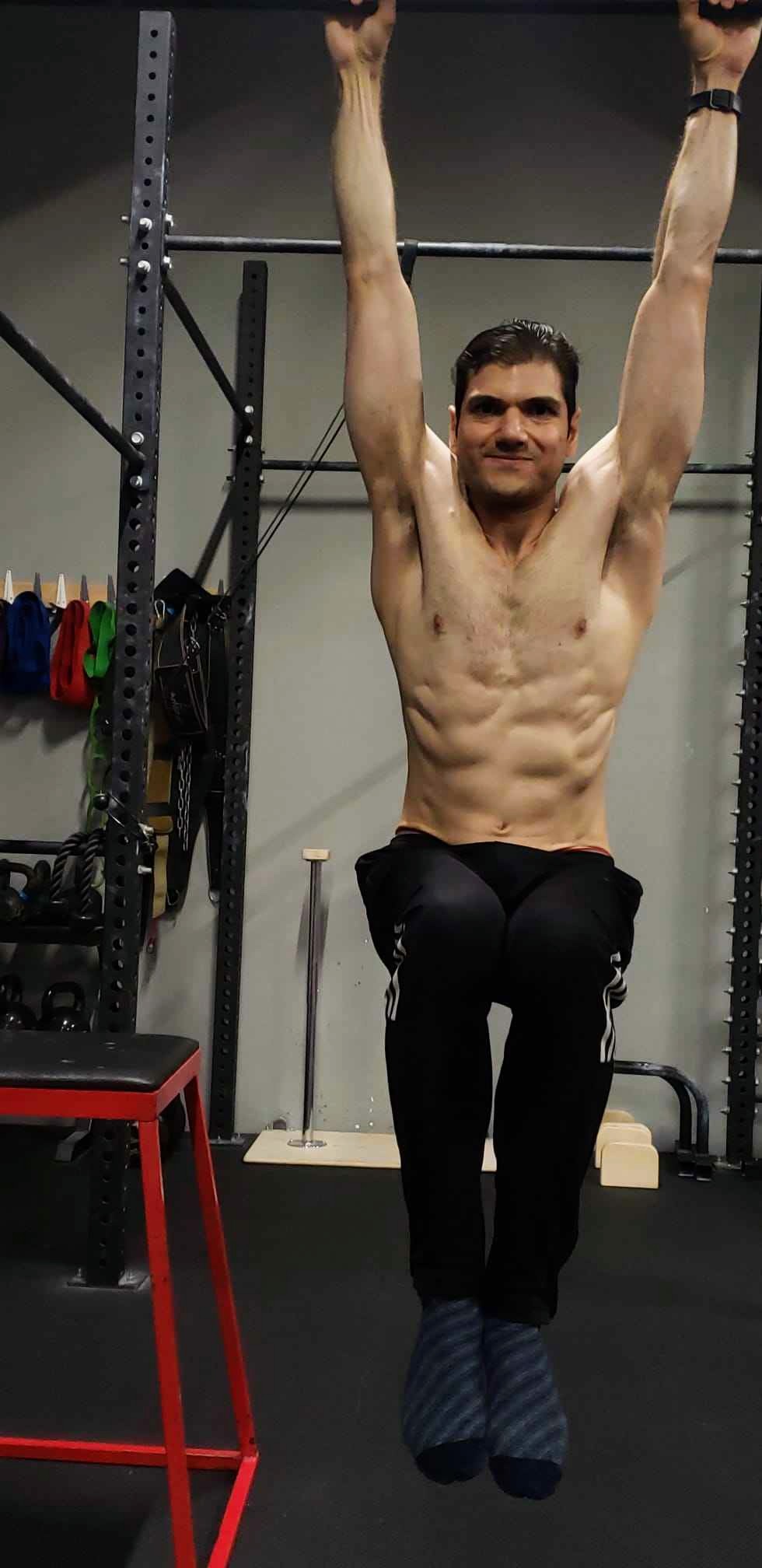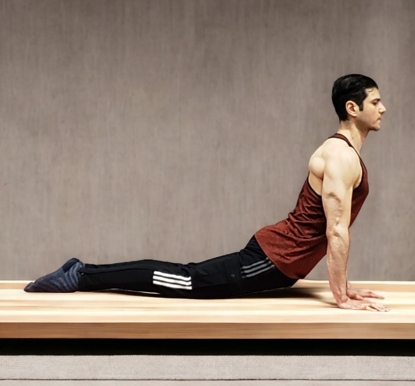- How Many Times A Week Should You See A Personal Trainer
- Factors to Consider When Deciding How Many Times a Week to See a Personal Trainer- Getting Closer to Your Fitness Goals
- Recommended Frequency of Personal Training Sessions Based on Fitness Level and Goals
- Importance of Consistency in Personal Training
- Evaluating Progress and Adjusting Frequency
- Other Considerations for Maintaining Fitness and Progress
- Conclusion: Hire a Personal Trainer!
- FAQs
- 1. How often should you see a personal trainer in a week?
- 2. Can I work out without my personal trainer?
- 3. Do I need to see my personal trainer more if I’m new to weight training?
- 4. Will seeing my trainer more often get me faster results?
- 5. How many PT sessions does it take to see some change?
- 6. What if I am training for an event?
How Many Times A Week Should You See A Personal Trainer

Navigating the world of personal fitness can seem like a labyrinth, right? You’re not alone in wondering how frequently you should be meeting with a personal trainer. I asked that same question when embarking on my own fitness journey.
After much research and some good old fashioned trial-and-error, I discovered that meeting a personal trainer anywhere from 1-3 times per week really seemed to do the trick. So let’s roll up our sleeves and dive deeper into crafting your ideal workout schedule!
Key Takeaways
- Seeing a personal trainer 1 – 3 times per week is recommended for optimal results in your fitness journey.
- Factors to consider when deciding frequency include starting skill and fitness level, goals, financial situation, motivation, and available time in schedule.
- Online personal training offers benefits such as customized workout routines, motivation and support, and convenience and flexibility.
Factors to Consider When Deciding How Many Times a Week to See a Personal Trainer- Getting Closer to Your Fitness Goals

When deciding how many times a week to see a personal trainer, it is important to consider factors such as your starting skill and fitness level.
Goals (weight/fat loss, gaining lean muscle)
Your aim shapes how often you see your trainer. If you want to lose weight or fat, working out hard counts. The harder you push, the more calories burn off. Building muscle helps here too.
Muscles are like heaters for calories – they make them disappear!
A trainer can design a custom training program, show you how to train effectively and perform exercises safely. You need to train with a personal trainer if your goal is to achieve the best results . Lifting weights may cause injury and hinder your progress.
If losing fat and gaining muscle is what you want, body re-composition is your target! In this case, a good trainer will help balance both goals in an effective way.
So before hiring a personal trainer, sit down and ask yourself: What do I want from all this? Your answer sets the stage for everything else.
Financial situation
Money plays a big role in how often you see a personal trainer. Hiring a good one may need more money. You pay for their time, skill and advice to help reach fitness goals faster.
This may be costly if you want many sessions per week.
The cost can change based on the trainer’s skills and background. More experienced trainers might ask for more money than new ones. Check your budget before deciding on how often should you work with them.
Think about keeping some cash for extra needs like sports gear or health food too.
Motivation
I know that staying pumped during workouts can be hard. That’s where a personal trainer comes in. They help to keep you going even when it gets tough. Wanting to skip the gym happens, but your trainer won’t let you off easy! Trainers make sure you stick to your fitness ambitions as long does it take and don’t give up on your goals.
So, if motivation is a struggle for you, deciding how often to see a personal trainer could be just what you need!
Available time in schedule
When deciding how many times a week to see a personal trainer, it’s important to consider the available time in your schedule. Finding time for regular sessions is crucial for consistency and progress.
Take into account your work, family, and other commitments, as well as your energy levels throughout the week. Consider whether you can commit to two or three sessions per week or if one session per week would be more realistic for you.
Keep in mind that regularity is key when it comes to obtaining your fitness goals.
Potential benefits of online personal training
Online personal training offers several benefits that can help you accomplishing your fitness goals. First, it saves time and eliminates the need to figure out workout routines on your own.
With online personal training, a professional trainer will customize workouts specifically for you based on your goals and fitness level. This ensures that you are doing exercises correctly and efficiently.
Second, online personal trainers provide motivation and support to keep you on track with your fitness progress. They can offer guidance and encouragement through virtual communication channels such as video calls or messaging platforms.
Desire to accelerate progress
If you want to see faster progress in your fitness quest, working with a personal trainer can be a great option. A good personal trainer will help you push yourself harder and stay motivated during your workouts.
They can also provide expert guidance on the best exercises and techniques to achieve your goals. Whether you’re looking to lose weight, build muscle, or improve overall fitness, a personal trainer can tailor a workout program specifically for you.
With their knowledge and support, you’ll be able to accelerate your progress and see the results you desire in a shorter amount of time. Trust me, it’s worth it!
Recommended Frequency of Personal Training Sessions Based on Fitness Level and Goals

The recommended frequency of personal training sessions varies depending on your fitness level and goals. For beginners, it is generally recommended to have 2-3 sessions per week to learn proper form and build a solid foundation.
Intermediate individuals can benefit from 2-4 sessions per week to continue progressing towards their goals. Those who are considered fitness experts may require 3-5 sessions per week to maintain their advanced level of fitness and further challenge themselves.
Beginner: 2-3 sessions per week
As a beginner, it is recommended to have 2-3 personal training sessions per week. This frequency allows you to learn proper form, build strength, and gradually progress towards your fitness goals.
Working with a personal trainer during these sessions can provide valuable guidance and support as you navigate your fitness adventure. By committing to regular sessions, you will establish good exercise habits and see noticeable results over time.
Remember that consistency is key in achieving long-term success. So start off strong with 2-3 sessions per week and watch yourself grow stronger and fitter with each session!
Intermediate: 2-4 sessions per week
For individuals at an intermediate fitness level, it is recommended to schedule 2-4 sessions per week with a personal trainer. This frequency allows for consistent progress and helps to build on existing skills and strength.
By working out with a trainer regularly, you can refine your technique, push your limits, and make noticeable improvements in your fitness and strength levels. It’s important to commit to these training sessions for at least 6 weeks in order to see the best results.
Remember that everyone’s fitness pursuit is unique, so finding the right balance between challenging yourself and allowing for proper recovery is key.
Fitness expert: 3-5 sessions per week
As a fitness expert, I highly recommend scheduling 3-5 personal training sessions per week for optimal results. By working with a personal trainer at this frequency, you can push yourself harder and achieve your fitness goals faster.
This level of commitment allows for consistent progress and helps build the necessary exercise habits to maintain long-term success. Whether you’re focusing on strength training or cardio exercises, making time for regular sessions will ensure that you see noticeable improvements in your overall fitness level.
So, if you’re serious about reaching your health and fitness goals, consider booking 3-5 sessions with a personal trainer each week.
Importance of Consistency in Personal Training
Consistency in personal training is crucial for seeing progress and winding up your fitness goals. Without regular practice and dedication, it’s difficult to build exercise habits, allow for progressive overload, and adapt to new challenges.
Exercises as skills that require practice
Exercises are like skills that need practice. Just like playing an instrument or learning a new language, the more you practice, the better you get. When it comes to personal training, working with a trainer helps improve your exercise techniques and form.
They can guide you on proper movements and help prevent injuries. Consistency is key in personal training because it allows for progressive overload and adaptation. By practicing exercises regularly, you build good habits and see improvements over time.
So remember, don’t be discouraged if you struggle at first – keep practicing and you’ll get better!
Building exercise habits
Consistency is key when it comes to building exercise habits. It’s important to make regular physical activity a part of your daily routine in order to see results and maintain progress.
By consistently engaging in exercise, you can develop the habit of being active and improve your overall health and fitness. Remember that it takes time for your body to adapt and for changes to occur, so be patient with yourself.
Start by setting realistic goals and finding activities that you enjoy. Whether it’s going for a walk, participating in group classes, or working out at home, find what works best for you and make it a priority in your schedule.
Allowing for progressive overload and adaptation
Progressive overload and adaptation are crucial for achieving optimal results in your fitness quest. Progressive overload means gradually increasing the intensity, duration, or difficulty of your workouts over time.
This can be done by adding more weight to your strength training exercises or increasing the number of repetitions you perform. By consistently challenging your body with progressive overload, you stimulate muscle growth and improve strength.
Adaptation is the body’s response to the stress placed on it during exercise. When you push yourself beyond your comfort zone, your muscles experience tiny tears that then repair and grow stronger.
This process is known as adaptation. To continue progressing, it’s important to allow your body enough time for recovery between workouts so that it has a chance to adapt and become stronger.
Remember, progressive overload should be implemented gradually and safely to avoid injury. It’s also essential to listen to your body and give yourself adequate rest days throughout the week.
Evaluating Progress and Adjusting Frequency
To evaluate progress and adjust frequency, it is important to reevaluate sessions and workout plans after six weeks, noticing noticeable results as a sign of progress, and communicating with the personal trainer about goals and progress.
Reevaluating sessions and workout plans after 6 weeks
After six weeks of working with a personal trainer, it is important to take the time to reevaluate your sessions and workout plans. This allows you to assess your progress and make any necessary adjustments.
It’s recommended that you look for noticeable results as a sign of progress, such as changes in strength or body composition. Communication with your personal trainer is also key during this evaluation period, as they can provide guidance on goals and help tailor your workouts to continue seeing results.
Remember that everyone’s journey is different, so the frequency of reevaluating after six weeks may vary based on individual circumstances and goals.
Noticing noticeable results as a sign of progress
When working with a personal trainer, it’s important to pay attention to the results you’re seeing. As you continue your fitness progress, keep an eye out for noticeable changes in your body and overall well-being.
This could include things like increased strength, improved endurance, weight loss, or even just feeling more energized throughout the day. Remember that progress looks different for everyone and may vary based on factors such as starting fitness level and goals.
By staying consistent with your training sessions and communicating regularly with your personal trainer about your progress, you can ensure that you’re on track to reach your desired results.
Communicating with the personal trainer about goals and progress
Talking to your personal trainer about your goals and progress is essential for achieving success in your overall fitness. By regularly communicating with them, you can ensure that you are on track and making progress towards your desired results.
Your personal trainer will be able to provide guidance, adjust your workout plan if needed, and keep you motivated throughout the process. They can also help evaluate any challenges or obstacles you may be facing and come up with solutions to overcome them.
Remember, open and honest communication with your personal trainer is key to staying focused and getting the most out of each session.
Other Considerations for Maintaining Fitness and Progress

Incorporate active rest days into your fitness routine to allow your body time to recover and prevent burnout. Additionally, consistently tracking your nutrition and hydration will ensure that you are fueling your body properly for optimal performance during personal training sessions.
Supplementing personal training sessions with additional exercise
To maximize your fitness growth, it’s important to supplement your personal training sessions with additional exercise. This can help maintain your progress and ensure that you continue to see results.
Adding extra workouts throughout the week will keep you active and engaged in physical activity beyond just the time spent with your personal trainer. Whether it’s going for a run, joining a group fitness class, or doing an at-home workout, incorporating more exercise into your routine can boost your overall fitness level and help you reach your goals faster.
Remember, consistency is key!
Incorporating active rest days
Rest days are an important part of any workout schedule, including rest days where you engage in light activity called “active rest.” These are days when you take a break from your regular intense workouts but still do some gentle exercises like walking or yoga.
Active rest days give your muscles time to recover and repair themselves, which is crucial for making progress and preventing injuries. Aim to have at least two rest days per week, with one day being a complete break from exercise.
By incorporating active rest days into your routine every three to five days, you’ll be able to maintain your fitness level and continue making gains in the long run.
Consistently tracking nutrition and hydration
When it comes to staying fit and healthy, consistently tracking our nutrition and hydration is really important. Paying attention to what we eat and drink can have a big impact on our performance during workouts, how well we recover, and even help prevent injuries.
For athletes engaged in competitive sports, nutrition and hydration become even more crucial for maximizing their performance on the field or court. Making sure we’re properly hydrated helps us stay energized and focused, while eating a balanced diet that provides enough nutrient-dense calories gives us the fuel we need to support our exercise routines and prevent injuries.
So remember, taking care of what we put into our bodies is just as important as the workouts themselves!
Conclusion: Hire a Personal Trainer!

In conclusion, the recommended frequency for seeing a personal trainer is one to three times per week. Consistency in training is important to see noticeable results and build exercise habits.
Ultimately, the number of sessions will depend on your goals, availability, and motivation level. Working with a personal trainer can help you stay on track and achieve your fitness goals more efficiently.
FAQs
1. How often should you see a personal trainer in a week?
The number of training sessions with a personal trainer will depend on your current fitness goals and schedule. Most people meet with their trainers two to three times every week.
2. Can I work out without my personal trainer?
Yes, you can still go to the gym without your personal trainer. Many people mix regular training with their trainers and workouts by themselves for better results.
3. Do I need to see my personal trainer more if I’m new to weight training?
You may want to work with your personal trainer more frequently when you start, maybe three times or 3 days a week at first, then reduce it as you learn the type of training needed.
4. Will seeing my trainer more often get me faster results?
Often seeing a personal trainer like twice or five times weekly helps tailor your program for quick yet healthy progress but remember getting results also needs good diet and rest.
5. How many PT sessions does it take to see some change?
How long it takes differs for everyone due to differences in body types and workout plans; however, one typically begins noticing changes after working steadily for weeks with their trainers two or thrice per week.
6. What if I am training for an event?
In case of event prep like marathons, you might have upped meets like four or seven days weekly based on the routine plotted by the best suited amongst many trainers available till date of that occasion.






Leave A Comment